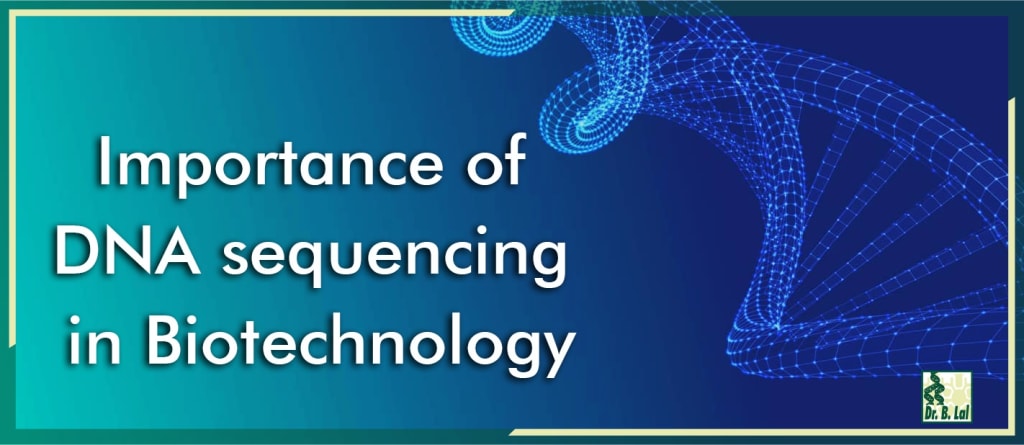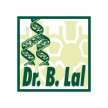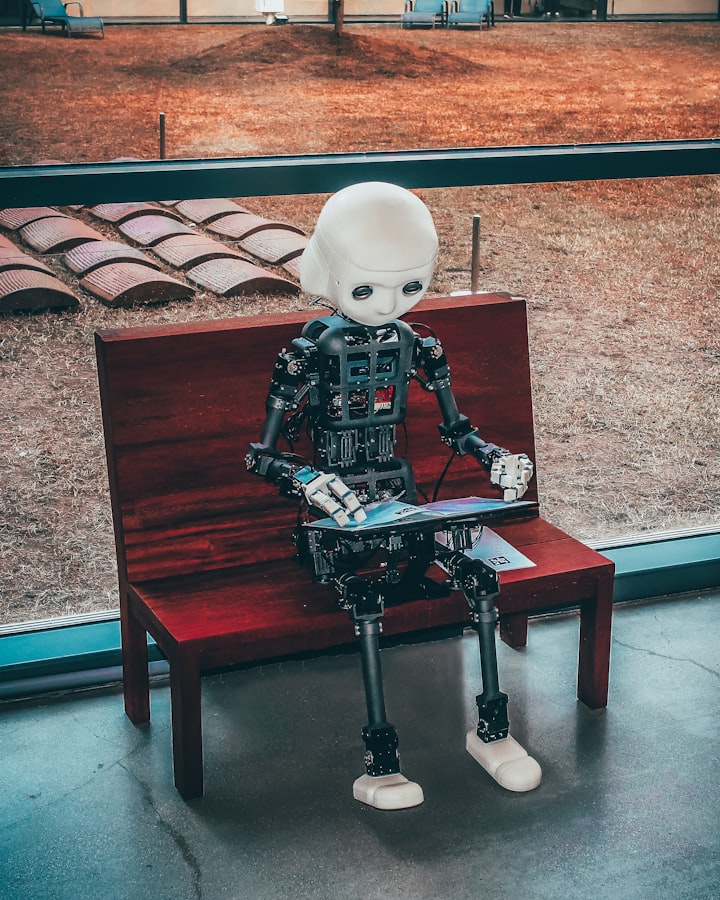Importance of DNA Sequencing in Biotechnology
Knowledge of the sequence of a DNA segment

Biotechnology
“Biotechnology is a wide discipline that harnesses cellular and biomolecular processes to develop technologies that help in improving the health and lives of the people.”
Structure of DNA
In 1953, James Watson and Francis Crick put forward their double-helix model of DNA, which is composed of two strands of nucleotides coiled around each other, linked together by hydrogen bonds and running in opposite directions. Each strand is composed of four complementary nucleotides – adenine (A), cytosine (C), guanine (G), and thymine (T) – with an A on one strand always paired with T on the other, and C always paired with G.
DNA Sequencing
DNA sequencing is the mechanism to determine the sequence of nucleic acids that are the basic units of DNA molecules. DNA sequencing provides info about how nucleotide bases are arranged in a fragment of DNA. Each individual and organism has a specific nucleotide base sequence so everyone has a different DNA sequence. This sequence tells scientists the kind of genetic information that is carried in a particular DNA segment and helps in different aspects of the welfare of humankind.
Importance of DNA sequencing in biotechnology
In Agricultural Biotechnology
In the agriculture industries, the identification of GMO species can be possible with the help of DNA sequencing methods. Any minor variations or mutations in the plant genome can be detected with the help of DNA sequencing. This will help in the identification of different diseases in plants and helps to make pathogen-free plants.
In Animal Biotechnology
Genomic sequencing of domestic animals helps in understanding the evolutionary relationships between species. Only because of sequencing researchers have found that two-thirds of human genes known to be involved in cancer have counterparts in the fruit fly.
Comparative genomics provides a powerful tool for studying evolutionary changes among organisms, as well as genes that give each organism its unique characteristics. By comparing the sequences of genomes of different organisms, researchers can understand what, at the molecular level, distinguishes different life forms from each other.
Because of the sequencing of animal genome scientists are now able to make genetically modified animals or clones of domestic animals for getting desired products and for the welfare of mankind.
In Medical Biotechnology
The use of biotechnology in medicine is revolutionizing the diagnosis of diseases caused by genetic factors. It involves the use of sequencing to find more efficient ways of maintaining human health and it also helps in the study of DNA to identify the causes of genetic disorders and methods to cure them. New tests can detect changes in the DNA sequence of genes associated with the disease.
Gene sequencing also helps in the development of gene therapy, a type of treatment designed to replace defective genes in certain genetic disorders. It has provided a means to design drugs that can target specific genes that cause disease.
It also opened up a path to more personalized medicine, enabling scientists to examine the extent to which a patient’s response to a drug is determined by their genetic profile. The genetic profile of a patient’s tumor, for example, can now be used to work out what is the most effective treatment for an individual.
In Forensic Biotechnology
Forensic science is the application of scientific knowledge and methodology to criminal investigations and legal problems. Biotechnology is used by forensic scientists to collect or process trace evidence such as hair, skin, blood, or semen samples, which are found at crime scenes.
An important aspect of modern forensics is the use of DNA profiling, or genetic fingerprinting. Forensic DNA profiles consist of size measurements which are interpreted as the number of repeat units at short tandem repeat (STR) markers. These new tests will allow forensic scientists to sequence STR markers, potentially resulting in an increased ability to differentiate individuals in complex mixtures.
In Pharmaceutical Biotechnology
This field has great potential for future medical advances through the study of the human genome as well as the genomes of infectious organisms. Analysis of microbial genomes has contributed to the development of new antibiotics, diagnostic tools, vaccines, medical treatments, and environmental cleanup techniques.
DNA sequencing has an important role in pharmacogenomics. Pharmacogenomics looks at how a person’s individual genome variations affect their response to a drug. Such data is being used to determine which drug gives the best outcome in particular patients.
In Microbial Biotechnology
Microbial genome analysis relies strictly on DNA sequencing technology. Knowledge of DNA polymorphisms improves the understanding of microbial genetic specificity. The microbial genome shows various sequence differences or polymorphisms. Microbial DNA polymorphisms are the basis for explaining the specificity of phenotypes, evolution, and taxonomy.
In COVID19 Pandemic
The highly contagious novel coronavirus, COVID-19, though originating in China, has now reached almost every country in the world. It has spread rapidly across countries endangering millions of lives. Almost every individual is directly or indirectly affected by this pandemic.
With the help of the gene sequencing method, researchers identified the complete genome sequence of covid19. Coronaviruses possess the largest genomes of all RNA viruses, consisting of about 29,926-nucleotide, polyadenylated RNA, with a G+C content of 32%, the lowest among all known coronaviruses with the available genome sequence.
As a result of their unique mechanism of viral replication, coronaviruses have a high frequency of recombination. Biotechnology has helped scientists to understand its origins and evolution and learn how and where it is spreading.
The COVID-19 pandemic offers a unique opportunity to biotechnologists across the world to take this challenge head-on. The biotech industry, including pharmaceutical companies, research organizations are developing vaccines and targeted drug therapies to combat the novel virus.
Next-generation sequencing methods can help enhance diagnostic testing accuracy as well. Because most of the testing developed for COVID-19 looks for one portion of the gene sequence that causes the virus if that one sequence mutates the test is no longer accurate.
Conclusion
Knowledge of the sequence of a DNA segment has many uses. The arrangement of nucleotides in DNA determined the sequence of amino acids in proteins, which in turn helped determine the function of a protein. It helps in basic biological research, in numerous applied fields such as medical diagnosis, biotechnology, forensic biology, virology, and biological systematics. Comparing healthy and mutated DNA sequences can diagnose different diseases including various cancers, characterize antibody repertoire, and can be used to guide patient treatment.
About the Creator
Dr. B. Lal Institute of Biotechnology
Dr. B Lal Institute of Biotechnology is one of the top MSC & BSC biotechnology colleges in Jaipur, Rajasthan.






Comments
There are no comments for this story
Be the first to respond and start the conversation.